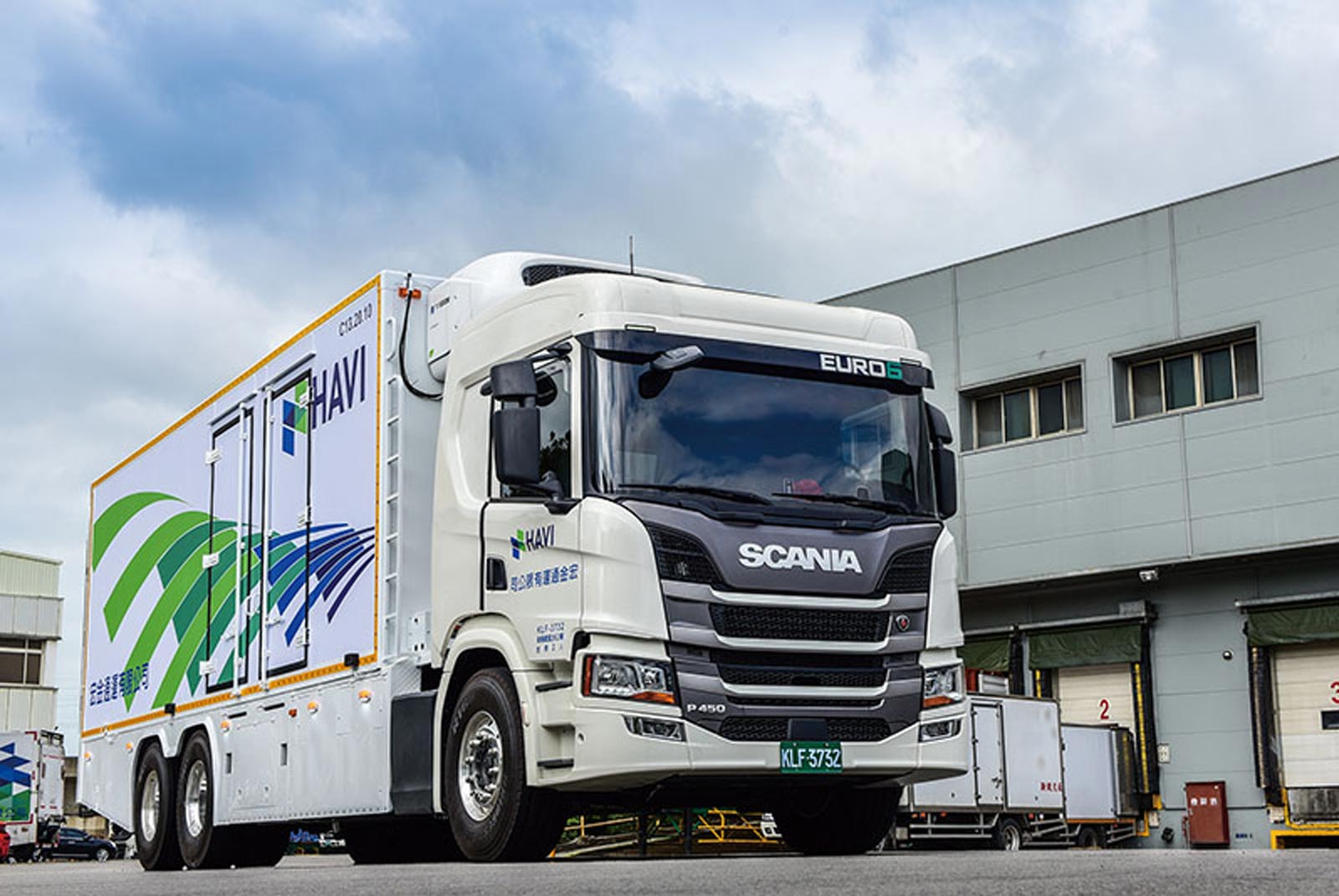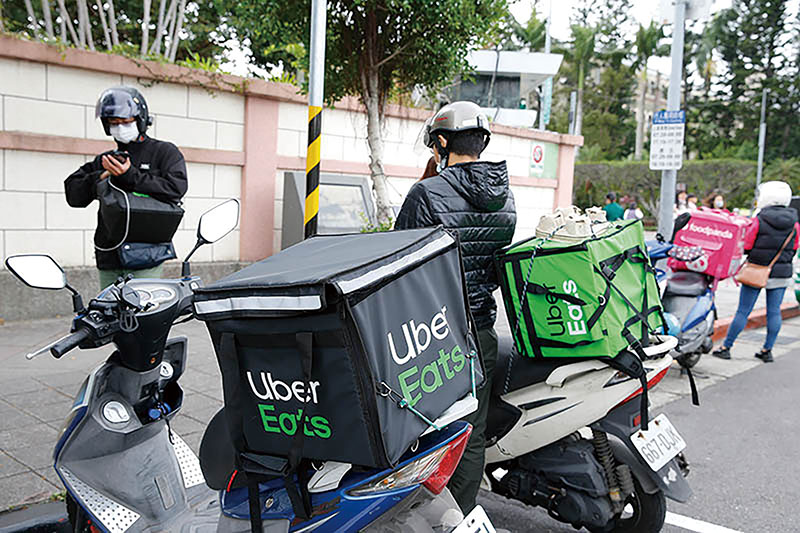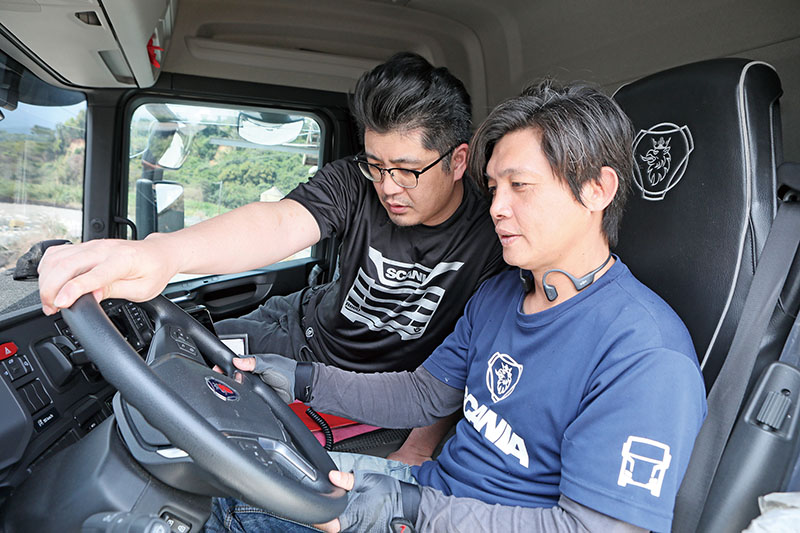Companies push for safety on Taiwan’s roads

Source:AmCham
Mixing technology and training, industry players are doing their part to increase safety for motorists, including professional drivers, in Taiwan.
Views
Companies push for safety on Taiwan’s roads
By Julia Bergströmweb only
With nearly half a million injuries connected to traffic incidents in Taiwan in 2022, efforts by the private sector to mitigate accidents and improve safety for drivers, cyclists, and pedestrians are an imperative part of solving the country’s road safety problem.
Spending most of their work weeks on the roads and operating heavy vehicles, professional drivers are at high risk of fatal vehicle crashes. But while the total number of fatal accidents has increased in Taiwan, fatal accidents involving professional drivers have been significantly decreasing since 2016, according to a 2022 study published in the journal Frontiers in Public Health. This improvement was mainly attributed to cutting-edge technological advancements, improved screening of drivers, progressive policies, and enhancements in connectivity and comfort for professional drivers.
For multinational commercial vehicle manufacturer Scania, sustainability and safety are prioritized issues that share many solutions. The company has invested heavily in training the professional drivers operating Scania vehicles in Taiwan by setting up programs that promote safe and sustainable driving.
“Of course, putting in the right hardware is step one, but the most important thing is the driver’s attitude,” says David Lin, Driving the Shift Director of Scania Taiwan, Asia, and Oceania. “That’s why we set up a professional driver training team in Taiwan 10 years ago to make sure that customers can get the most use out of our advanced trucks.”
Scania’s driver training is compulsory for users of its vehicles and includes six months of coaching as well as two years of connected services. After half a year, the average Scania driver has cut their fuel usage by 4% in addition to adopting more cautious driving behaviors. To motivate drivers to adjust their behaviors, Scania has also organized virtual driver competitions in Taiwan. After collecting fuel consumption and driver data, Scania rewards those with the best improvement to incentivize participation.
Many other professional drivers operate their own vehicles while partnering with companies such as Uber. With tens of thousands of drivers and delivery partners on the road daily, the company recognizes its responsibility for drivers and delivery partners here. Most of Uber’s food delivery partners move on scooters, making them more vulnerable to traffic accidents than drivers in cars or trucks. Food delivery partners are required to take a three-hour course – of which at least one hour deals with road safety – before they are eligible to offer deliveries on behalf of Uber Eats. Those driving scooters must also use Uber’s technology to verify that they are wearing a helmet before hitting the road.
Uber appointed Vivian Yang as Head of Safety in Taiwan in early 2022 as part of a continuous effort to support its Vision Zero initiative for serious accidents. The Head of Safety performs analyses and uses these to propose safety policies and product functions for drivers and delivery partners.
 With upgrades to its software, Uber Eats has ensured its delivery partners are undisturbed while moving on the roads.
With upgrades to its software, Uber Eats has ensured its delivery partners are undisturbed while moving on the roads.
“As a platform that moves tens of millions of people and goods every year, we understand the difference safer infrastructure, lower speeds, and improved technology can make on our roadways,” says Yang.
Saskia De Jongh, Uber Eats’ regional general manager for Asia Pacific, at an AmCham event earlier this year noted that the company also collaborates with governments and officials and work on education to promote safety.
Uber says its user data has helped the company implement measures that improve traffic safety, such as delaying notifications on delivery partners’ devices when the vehicle is moving. The company has also set up a safety collaboration group with the courier union and road safety academics to collect feedback from couriers. To gather qualitative feedback, Uber runs focus groups and surveys on safety issues.
Some car manufacturers, meanwhile, have implemented programs to promote responsible driving. Mercedes-Benz, Taiwan’s leading luxury automotive brand, offers designated driving services through its customer relationship management tool, the Mercedes-Benz Pass – a benefit exclusive to the Taiwan market. Through a partnership with Taiwanese taxi company 55688, drivers receive training at the Mercedes Training Center, where they also familiarize themselves with the brand’s various models to ensure vehicles are managed properly. The idea is for the Mercedes-Benz pass to be used by drivers after a night out to prevent drunk driving.
For its part, the government implemented a “zero-tolerance” policy against drunk driving in January by amending the Road Traffic Management and Penalty Act, which led to the introduction of standardized rates for designated driver services in June this year. Regardless of whether a first or repeat offense, offenders whose actions result in the death or serious injury of others now face a cash fine of between NT$1 million (around US$36,000) and NT$3 million in addition to criminal liability.
Offenders who repeat the crime within 10 years will have their names and faces revealed, as well as revocation of their licenses and harsher penalties. Drunk drivers who do not cause accidents will face up to three years in prison, an increase from the current two years, and up to NT$300,000 in fines. Impaired driving caused by alcohol or drugs will result in the license plate being suspended for two years and the vehicle being confiscated if the act results in the death or serious injury of others.
Technological solutions
The various collision-avoidance systems now on the market perhaps represent the most significant advancement in safety technology. Reverse backup sensors, rearview cameras, lane departure warnings, enhanced infrared night vision, autonomous braking systems, and adaptive headlights are among the features on the list. But most effective in reducing accident damage and insurance claims are forward collision-avoidance systems.
Mercedes-Benz introduced its own collision-avoidance system, PRE-SAFE, 20 years ago. With a track record of safety pioneering – Mercedes-Benz developed the anti-lock braking system, or ABS, together with German multinational engineering and technology company Bosch in the 1970s – the company says it’s now continuing to improve its safety features.
“Other safety features include blind spot detection, autopilot, and our new Intelligent Drive, which can sense over 160 feet ahead and read the surrounding environment over 1,640 feet ahead,” said Mercedes-Benz Taiwan CFO Honoré Tchoukuegno in an interview with Taiwan Business TOPICS earlier this year. The company has set a goal of achieving accident-free driving by 2050. “Our ambition is to protect the safety of all road users,” said Tchoukuegno.
 Scania Taiwan utilizes its professional driver training team to improve fuel economy and safety.
Scania Taiwan utilizes its professional driver training team to improve fuel economy and safety.
Scania’s Lin sees various degrees of autonomous driving as a future solution that will improve safety and sustainability in the transportation sector while mitigating the consequences of future driver shortages. The commercial vehicle manufacturer has already launched several autonomous vehicles in Sweden, including for use in the mining industry and open-road conditions.
The debate around autonomously moving vehicles is still ongoing, and Lin stresses the many philosophical questions surrounding the subject. Humans will through programming need to determine who should be prioritized in a scenario in which avoiding one person means colliding with someone else. Still, proponents of autonomous driving argue that it’s safer to rely on machines than people, and there are steps to take to introduce semi-autonomous solutions before the debate is settled.
“We’ve also launched what we call platooning,” says Lin. “By connecting four trucks with one another, with the truck furthest ahead being operated by a driver, the other drivers can take a rest or do some route planning before switching who takes the lead.”
Platooning saves fuel and decreases the distance between trucks, as the connected trucks automatically adjust their speed according to the leading vehicle. But perhaps more importantly, adopting platooning solutions could reduce workloads for professional drivers in Taiwan. Workload among drivers is a pressing issue in Taiwan, as the study published in Frontiers showed that professional drivers involved in vehicle crashes were more likely than non-professionals to have taken benzodiazepines (depressants that can have a sedative effect) due to high levels of job-related stress.
While platooning is expected to be adopted in Europe next year, Lin says regulations permitting autonomous vehicles are moving slowly in Taiwan, in part due to the road conditions here. But Scania also sees opportunities for limited adoption.
“For example, Evergreen often has some 10 trucks departing from Keelung Harbor at the same time, all moving to the same destination,” says Lin. “For this kind of operation, there’s a chance to adopt platooning solutions.”
Lin says that Scania’s platooning solutions and autonomous commercial vehicles have received attention in the West, particularly in places with mining industries. Many countries have also begun drafting regulations that govern autonomous vehicles to facilitate situational testing and eventual commercial use. In fact, Mercedes-Benz received approval for commercial use of its driverless parking system in Germany late last year. Scania’s first electric and autonomous bus hit the roads of Sweden as early as 2019.
But in Taiwan, the only regulations covering road testing of autonomous vehicles are the Unmanned Vehicles Technology Innovative Experimentation Act and the Road Traffic Safety Rules Act. Both these laws lack clear regulatory standards for autonomous driving, according to the Legislative Research Bureau, which released a report in September last year stating that the lack of a code for autonomous vehicles is impeding the industry’s development in Taiwan. The report suggests that lawmakers use other countries’ regulations to define autonomous driving standards.
Another challenge, notes Lin, is the need for fast and stable internet connectivity. To implement solutions like platooning, trucks must be constantly connected to high-speed internet – even 5G might not be enough to ensure stability for the vast amount of data that needs to be transmitted between vehicles. To this end, the company is looking to work with telecommunications partners. Lin calls for collaboration between sectors as well as assistance from government in educating the public and promoting advanced solutions.
“Autonomous driving is challenging for Taiwan at the moment, but I certainly believe that we can start with an isolated area and then gradually expand for industry use,” says Lin. “We should try every solution we can think of.”
This article is reproduced under the permission of AmCham. Original content can be found at the website of Taiwan Business Topics
Have you read?
- How do Evergreen Marine, Eva Airways, and Hotai Motor cut emissions?
- Crazy Taiwan driving experiences and how to fix them
- Lessons from first fatal highway accident in Taiwan involving assisted driving
Uploaded by Ian Huang






